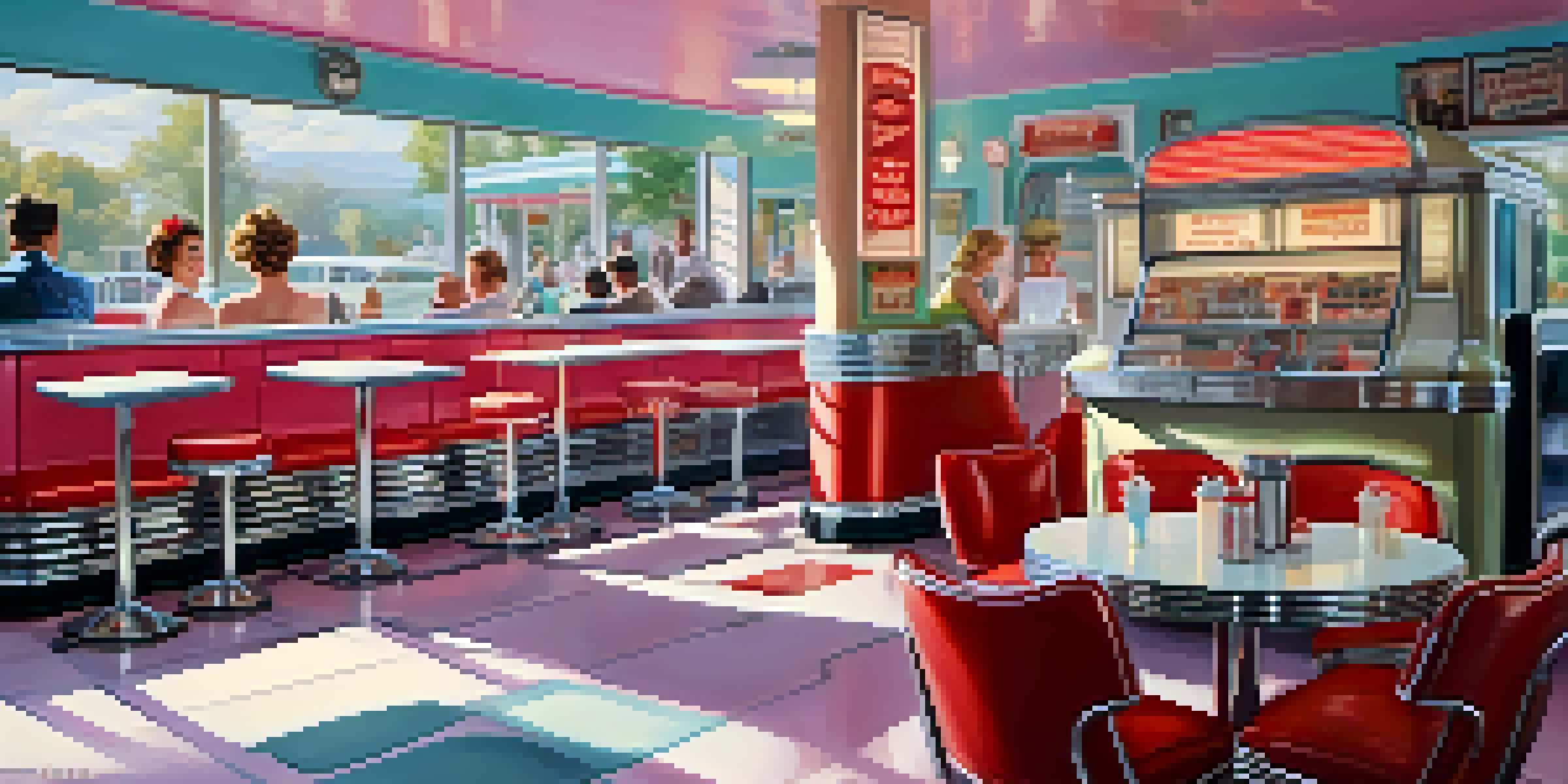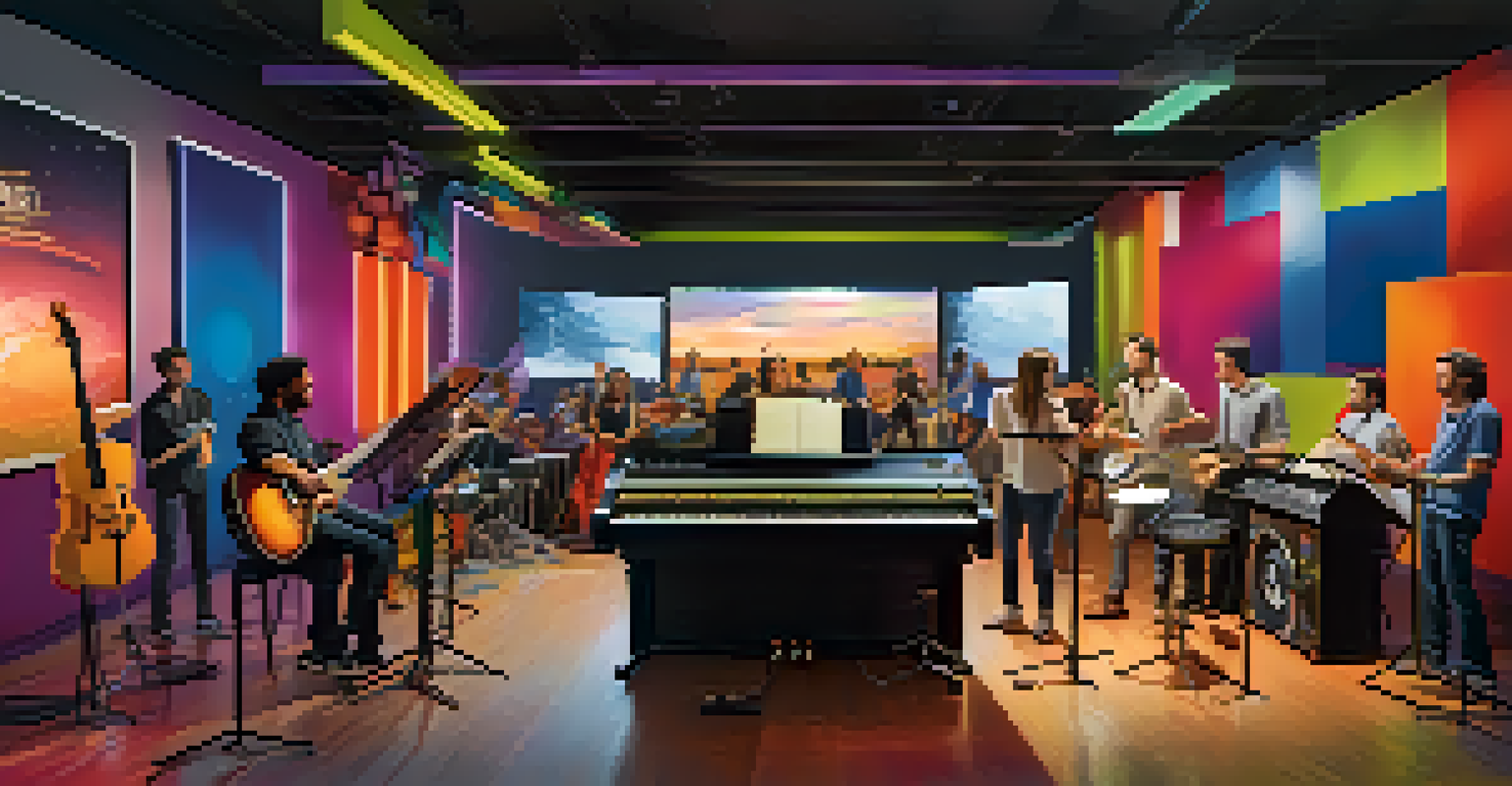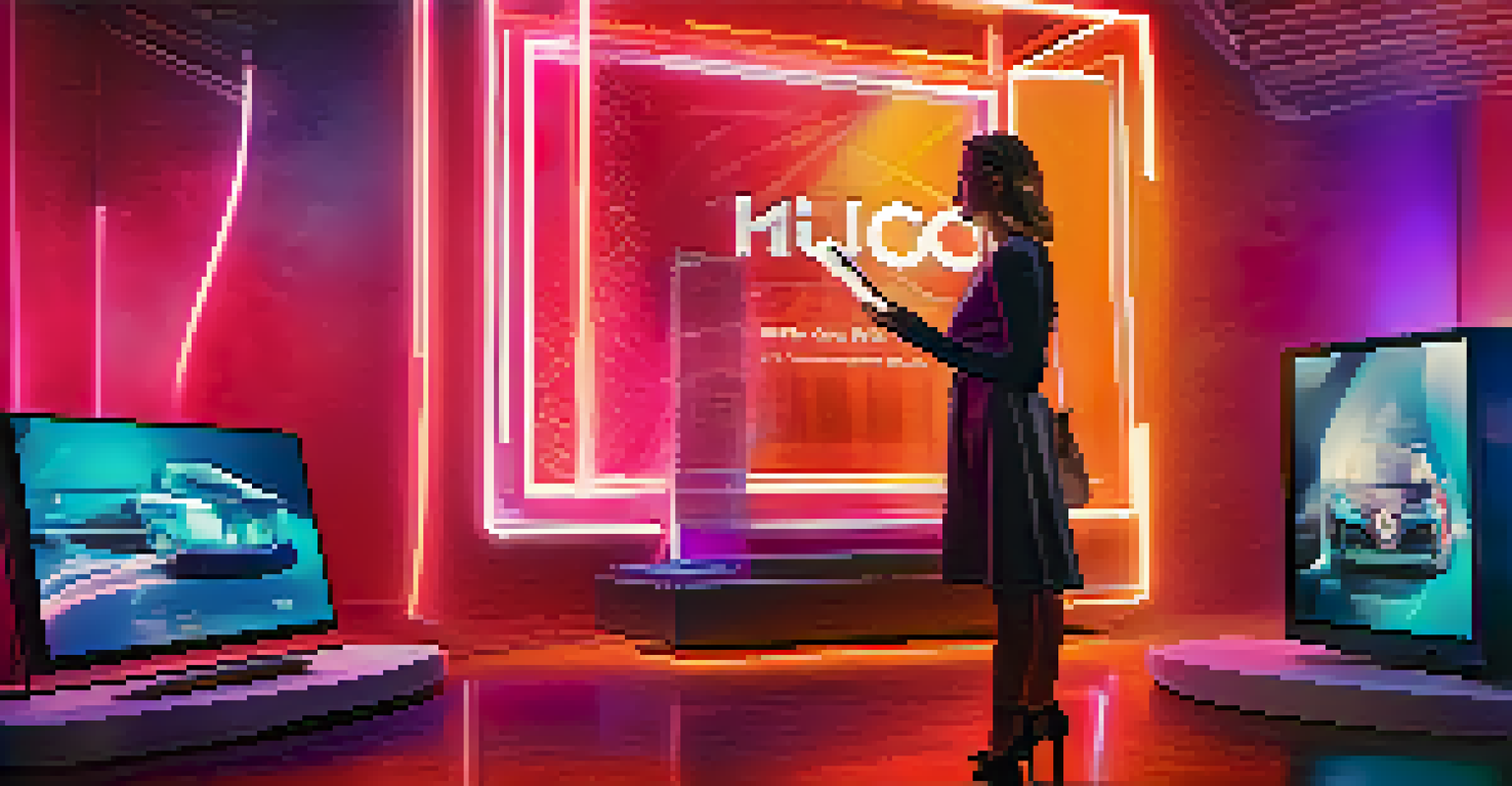The Evolution of Music in Advertising Over the Years

The Early Days: Jingles and Catchy Tunes
In the early 20th century, advertising music primarily consisted of jingles. These catchy tunes were designed to stick in your mind, often featuring simple melodies and memorable lyrics that highlighted a product's benefits.
Music can change the world because it can change people.
Companies quickly realized the power of a good jingle, as it could evoke emotions and create brand recognition. Think of classic examples like 'I’d Like to Buy the World a Coke'—a tune that not only promoted a drink but also spread a message of unity.
As radio and television became more popular, jingles found a wider audience, marking the beginning of music's crucial role in advertising. The catchy tunes helped brands stand out in a crowded marketplace, making them unforgettable.
The Rise of Celebrity Endorsements in the 1970s
As the 1970s rolled in, advertisers began to understand the impact of celebrity endorsements, particularly when paired with music. Brands sought out popular musicians to create a connection with their target audience.

This era saw iconic collaborations, like the McDonald’s 'You Deserve a Break Today,' featuring well-known artists. These partnerships not only enhanced the appeal of the ads but also brought a sense of authenticity to the marketing efforts.
Jingles Launched Music in Ads
In the early 20th century, catchy jingles became essential for creating brand recognition and evoking emotions in advertising.
Celebrities brought their fanbase along, creating a powerful synergy between music and advertising. This strategy also paved the way for music videos, as brands started to think creatively about how to engage consumers.
The 1980s: Music Videos Transforming Advertising
The 1980s marked a pivotal moment with the rise of MTV, where music videos became a cultural phenomenon. Brands began to tap into this trend by creating advertisements that resembled music videos, blurring the lines between entertainment and advertising.
The best advertising is done by satisfied customers.
For example, the Pepsi commercials featuring artists like Michael Jackson and Madonna were not just ads; they were mini-music videos that captivated audiences. This visual storytelling approach helped brands connect with younger consumers in a more relatable way.
As the decade progressed, advertisers recognized that a catchy song could enhance brand loyalty. The fusion of music and visuals set a new standard for creative advertising that continues to influence strategies today.
The 1990s: Diversity in Genre and Approaches
The 1990s saw a diversification of music genres in advertising, as brands began to explore various styles to resonate with different audiences. From hip-hop to grunge, companies wanted to align their messaging with the cultural movements of the time.
This era also introduced the concept of using popular songs in ads, making them instantly recognizable. For instance, the use of 'I’m a Pepper' by Dr. Pepper created a catchy association that appealed to a wider demographic.
Celebrities Enhanced Brand Appeal
The 1970s saw the rise of celebrity endorsements in advertising, creating authentic connections with consumers through music.
By mixing genres and styles, advertisers could evoke different emotions and experiences. This allowed brands to craft unique identities while appealing to the evolving tastes of consumers.
The 2000s: Licensing Popular Songs for Ads
As the new millennium dawned, the licensing of popular songs for commercials became a prevalent strategy. Advertisers realized that using chart-topping hits could create instant recognition and a boost in sales.
Brands like Apple and Nike utilized this approach masterfully, incorporating songs from artists like U2 and Pharrell Williams into their campaigns. These choices not only enhanced the ads' appeal but also positioned the brands as trendsetters.
The emotional connection that music elicits was further capitalized on, as brands sought to create memorable experiences. This trend cemented the idea that music is an essential part of effective advertising.
The Digital Age: Social Media and Music Integration
With the rise of social media in the 2010s, the relationship between music and advertising evolved yet again. Platforms like Instagram and TikTok allowed brands to engage consumers through short, catchy snippets of songs, often leading to viral marketing campaigns.
User-generated content became a powerful tool, with consumers creating their own ads using popular tracks. This not only increased brand visibility but also fostered a sense of community around the products.
Personalized Music for Future Ads
The future of advertising is poised to leverage technology for personalized music experiences that resonate with individual listeners.
The digital landscape also enabled brands to collaborate with emerging artists, giving them a platform to reach new audiences. This approach not only keeps advertising fresh but also helps brands stay relevant in a fast-paced environment.
The Future: Personalized Music Experiences in Advertising
Looking ahead, the future of music in advertising is likely to focus on personalization. With advancements in technology, brands can analyze consumer preferences and tailor their ads to include songs that resonate with individual listeners.
Imagine a world where your favorite playlist is seamlessly integrated into an ad, creating a unique experience just for you. This level of personalization can foster deeper connections between consumers and brands.

As artificial intelligence continues to evolve, the potential for creating customized music experiences in advertising is limitless. The goal will be to enhance emotional engagement, ensuring that the music not only sells a product but also tells a story.